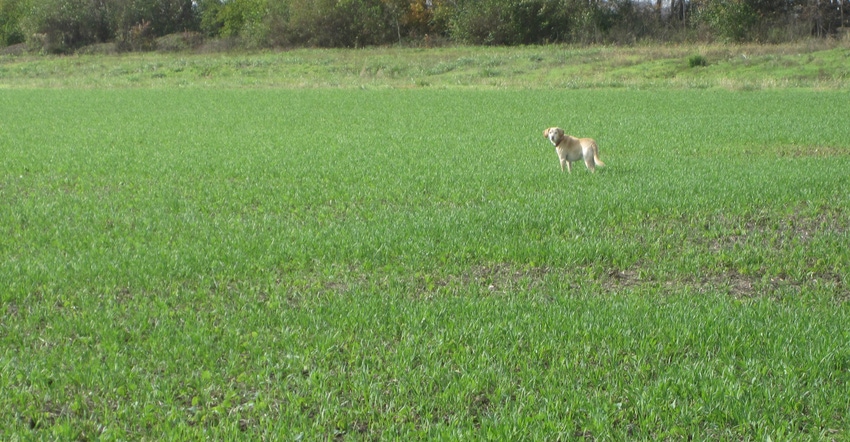
For three years running, cover crops are the third most grown crop in Indiana. Yet not every farmer in the state uses cover crops. Cover crop specialists believe that in this difficult economic environment, it’s essential that these gears of success continue to roll forward. A look back at some basics might help those who haven’t planted cover crops yet decide to give them a try.
This information was prepared by Indiana Conservation Partnership personnel, led by USDA Natural Resources Conservation Service staff including: Don Donovan, Clint Harrison, Amanda Kautz, Derek Schmitt and Brian Musser, district conservationists; Susannah Hinds, grazing lands specialist; Stephanie McLain, state soil health specialist; Kris Vance, public affairs specialist; Tony Bailey, state conservation agronomist; Victor Shelton, grazing specialist; and Shannon Zezula, state resource conservationist.
Here are five basic tips for cover cropping:
1. Identify a single goal or purpose. Understand what you’re trying to accomplish, whether it’s erosion control, compaction reduction or nutrient retention. Look at each individual field for what it’s worth, and pick just one goal, one purpose or one resource concern. Avoid laying every goal and problem on the table. Stay focused on a single goal.
2. Develop a plan. A cover crop plan is essential. This plan details who, what, where and when; your goal above is the why. Make sure this plan is not just in your head, but also written down on paper. Always have a backup plan — or two or three.
Listen to experienced cover croppers when they speak; they can always tell you what their plan is, and their backup plan if conditions aren’t right for their original plan.
3. Know your planting window and seeding options. Lay out the options available for seeding your cover crop. Do you have a drill for seeding after harvest? Is there an aerial or interseeding applicator nearby?
As for what to seed, increase your chances of success by planting as early as possible. Be realistic about your seeding window, and work with species known to germinate when you plan to seed. If your plan is to drill cover crop seed after corn harvest, stick to cereal rye or annual ryegrass. It’s so late in the season that there will be little success with cover crop mixes or other less cold-tolerant species.
4. Decide on a termination strategy. Using winterkill species like radishes and oats can be a way to try cover crops, but you need to ensure they’re planted a few weeks before the first frost to have any growth. Also, cereal rye is easy to kill in the spring and is great before soybeans.
If you’re new to cover crops and are feeling antsy about terminating cereal rye or annual ryegrass as soon as possible, it’s likely too early for termination! Plants need to be actively growing for successful termination. Living cover crop roots suck up moisture and jump-start the soil biology in the spring, so wait to terminate until conditions are right.
5. Start small but give your all. On average, try to evaluate about 10% of your total acres. This amount is small enough to not cause problems but not too small that you discredit the results. Also, no matter the amount you start with, an “all in” total commitment is essential to success, even if it’s just one field.
About the Author(s)
You May Also Like




